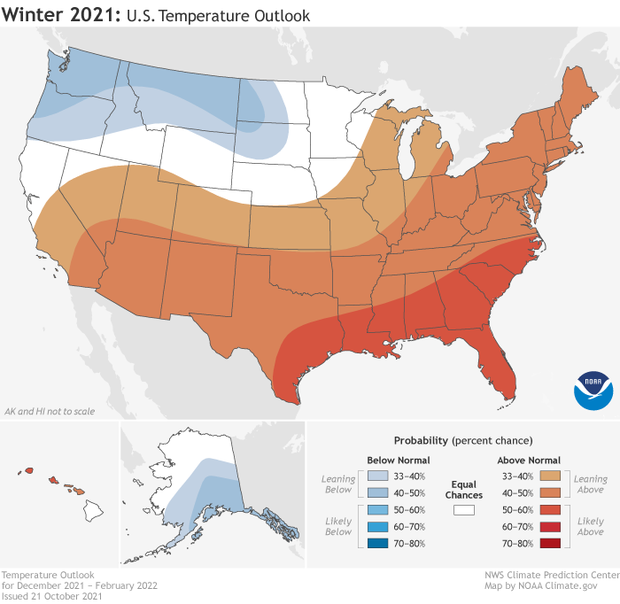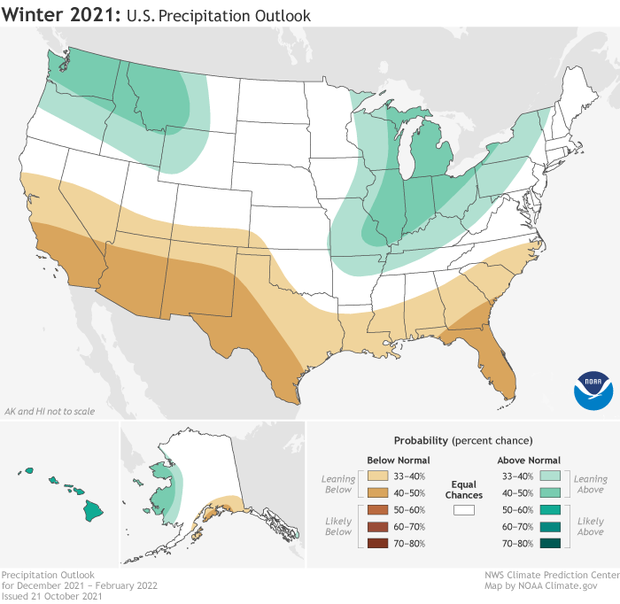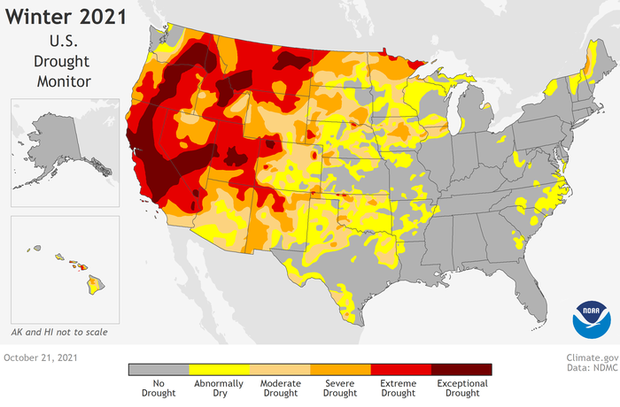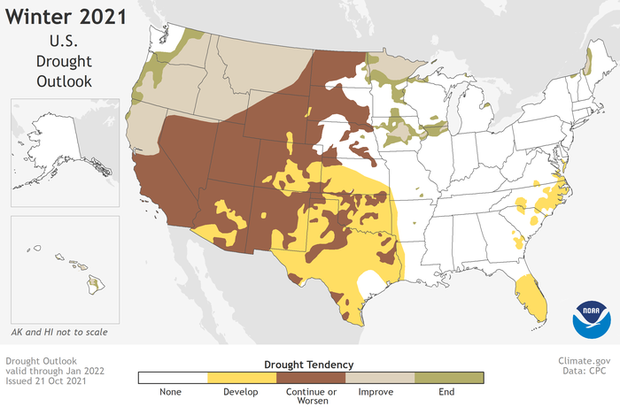2021-22 Winter Outlook: drier, warmer South, wetter North with return of La Niña
1 minute, 54 seconds
The U.S. is headed for its second La Niña winter in a row. This video explains what that might mean for winter temperature, precipitation, and drought. Video by NOAA Climate.gov in collaboration with the Climate Prediction Center.
Details
Temperature
- Warmer-than-average conditions are most likely across the Southern tier of the U.S. and much of the Eastern U.S., with the greatest likelihood of above-average temperatures in the Southeast.
- Below-average temperatures are favored for southeast Alaska and the Pacific Northwest eastward to the northern Plains.
- The Upper Mississippi Valley and small areas of the western Great Lakes have equal chances for below-, near- or above-average temperatures.
Map of the United States showing which winter average temperature outcome—much warmer than average (red) or much cooler than average (blue)—is most likely. Darker colors mean greater chances, not bigger temperature extremes. White does not mean "average." It means a relatively warm, cool, or near average winter are equally likely. NOAA Climate.gov image, based on Climate Prediction Center data.
Precipitation
- The Pacific Northwest, northern Rockies, Great Lakes and parts of the Ohio Valley and western Alaska have the greatest chances for wetter-than-average conditions.
- Drier-than-average conditions are favored in south-central Alaska, southern California, the Southwest, and the Southeast.
- The forecast for the remainder of the U.S. shows equal chances for below-, near- or above-average precipitation during winter months.
Map of the United States showing which winter average precipitation outcome—much wetter than average (blue-green) or much drier than average (brown)—is most likely. Darker colors mean greater chances, not bigger temperature extremes. White does not mean "average." It means a relatively wet, dry, or near-average winter are equally likely. NOAA Climate.gov image, based on Climate Prediction Center data.
Drought
Drought conditions across the United States as of October 21, 2021. Half of the contiguous United States was classified as abnormally dry (yellow) or in some level of drought from moderate (orange) to exceptional (darkest red). NOAA Climate.gov map, based on data from the U.S. Drought Monitor team.
Widespread severe to exceptional drought continues to dominate the western half of the continental U.S., Northern Plains, and the Missouri River Basin.Drought conditions are forecast to persist and develop in the Southwest and Southern Plains. The Pacific Northwest, northern California, the upper Midwest, and Hawaii are most likely to experience drought improvement.
Drought forecast for the United States states through January 2022. Brown indicates areas where experts believe drought will persist or worsen. Green areas mean drought is likely to end. Map by Climate.gov, based on data from the Climate Prediction Center.
Read more in the NOAA press release.



